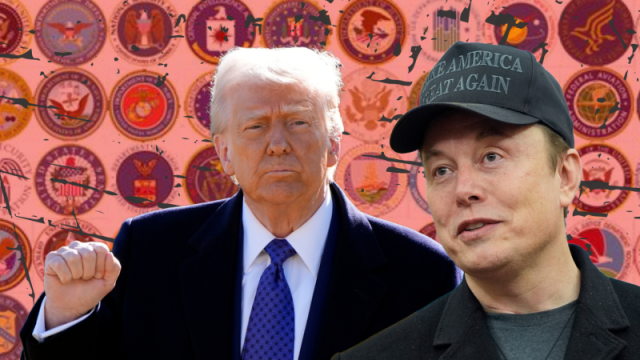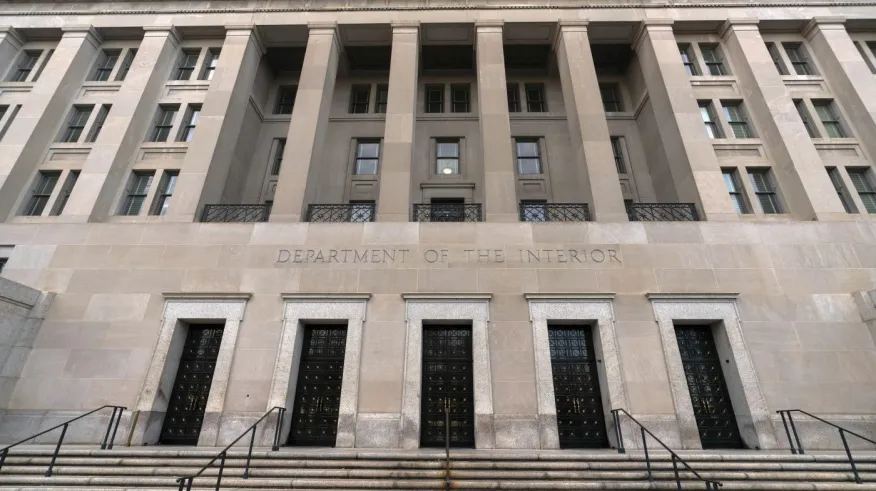
The Hill: Federal Shakeup Under Trump Administration Targets Probationary Employees
In a dramatic restructuring effort, the Trump administration has directed the heads of several federal agencies to begin dismissing employees still within their probationary period—typically within their first one or two years on the job. This sweeping directive, which surfaced earlier this week, could affect over 200,000 federal workers. The move is part of a broader initiative to streamline government operations and reduce spending, spearheaded by the Department of Government Efficiency (DOGE), a newly established entity under the leadership of tech billionaire Elon Musk.

Understanding the Probationary Period
Federal employees in their probationary period have limited job protections compared to permanent employees. While they are afforded some due process rights, their status makes them more vulnerable to termination. The Trump administration’s decision leverages this vulnerability to expedite the removal of workers deemed unnecessary or inefficient.
Those affected by the directive do retain the right to appeal their dismissal to the Merit Systems Protection Board (MSPB), an independent agency tasked with ensuring federal employees are not removed for political or discriminatory reasons. However, given the sheer scale of potential dismissals, the MSPB may face an overwhelming number of appeals.
The Role of DOGE in the Government Overhaul
Elon Musk’s leadership of the Department of Government Efficiency marks a radical shift in federal workforce management. DOGE has been aggressive in its pursuit of cost-cutting measures, which in some cases have involved dismantling entire agencies. Musk, known for his disruptive approach to business and technology, has applied similar principles to governance, focusing on automation, AI-driven decision-making, and minimizing bureaucracy. Critics argue that this approach could lead to widespread instability and loss of essential government functions, while supporters claim it is a necessary step to rein in government inefficiencies.
Which Agencies Are Implementing the Purge?
Several agencies have already begun executing the order, including:
1. Department of Education (DOE)
The Department of Education has begun terminating staff involved in administrative functions, as DOGE explores alternative ways to privatize or streamline the education system. This move aligns with past efforts to reduce federal oversight of education in favor of state and local governance.
2. Environmental Protection Agency (EPA)
The EPA, long a target of Republican administrations, has also seen significant job cuts. Employees working on climate change initiatives and regulatory enforcement have been the first to go, as the administration seeks to roll back environmental regulations that it deems restrictive to business growth.
3. Department of Health and Human Services (HHS)
HHS has seen a purge of employees involved in regulatory roles, particularly in the Food and Drug Administration (FDA) and Centers for Medicare & Medicaid Services (CMS). This effort aligns with the administration’s push for deregulation in the healthcare sector.
4. Internal Revenue Service (IRS)
The IRS, a perennial target of budget cuts, is now facing further reductions, with a focus on downsizing the workforce responsible for auditing and enforcement. The administration argues that a leaner IRS will lead to a more business-friendly tax environment, though critics warn of increased tax evasion and decreased government revenue.
5. Department of Housing and Urban Development (HUD)
HUD has also begun terminating employees, particularly those involved in housing assistance programs. The administration’s focus on deregulation and reducing federal involvement in housing markets has led to widespread uncertainty among lower-income communities dependent on HUD services.
The Impact of Mass Terminations
The large-scale terminations will have far-reaching consequences. Some analysts predict that the reduction in government workforce could lead to slower response times for essential services, decreased oversight of regulatory compliance, and potential gaps in critical areas like public health, education, and environmental protection.
Additionally, these job cuts could disproportionately affect younger employees and those from underrepresented groups, many of whom enter the federal workforce through probationary roles. While the administration maintains that the goal is to increase efficiency, opponents argue that these moves could set back decades of progress in building a diverse and capable federal workforce.
Legal and Political Challenges
The order to purge probationary employees is likely to face significant legal challenges. The MSPB’s role in reviewing dismissals will be crucial in determining whether these firings were justified or politically motivated. Given the unprecedented scale of the dismissals, the board is expected to be inundated with appeals, potentially leading to prolonged legal battles.
Politically, the move has been met with a mixed response. Republican lawmakers generally support the initiative as a necessary step to curb government overreach and wasteful spending. However, Democrats and labor unions have condemned the directive, calling it an attack on federal workers and a dangerous politicization of the civil service.
Public Reaction and Protests
Public response to the firings has been swift. Labor unions representing federal workers have begun organizing protests and filing lawsuits to challenge the dismissals. Employees affected by the order have taken to social media to voice their concerns, sharing personal stories of how their livelihoods are at risk. Advocacy groups have also launched campaigns urging Congress to intervene and protect workers from what they view as arbitrary and politically motivated terminations.
Conclusion: The Future of the Federal Workforce
The Trump administration’s aggressive approach to reducing the federal workforce through mass dismissals of probationary employees signals a significant shift in government operations. While the move is framed as a cost-cutting measure, its broader implications raise questions about the stability, efficiency, and fairness of the federal workforce.
With legal challenges mounting and public opposition growing, the administration may face obstacles in fully implementing its plan. The coming months will be crucial in determining whether these job cuts will lead to a more efficient government or create chaos within federal agencies. As the situation unfolds, the role of watchdog organizations, legal bodies, and public advocacy will be essential in shaping the future of the federal workforce
Understanding the Probationary Period
Federal employees in their probationary period have limited job protections compared to permanent employees. While they are afforded some due process rights, their status makes them more vulnerable to termination. The Trump administration’s decision leverages this vulnerability to expedite the removal of workers deemed unnecessary or inefficient.
Those affected by the directive do retain the right to appeal their dismissal to the Merit Systems Protection Board (MSPB), an independent agency tasked with ensuring federal employees are not removed for political or discriminatory reasons. However, given the sheer scale of potential dismissals, the MSPB may face an overwhelming number of appeals.
The Role of DOGE in the Government Overhaul
Elon Musk’s leadership of the Department of Government Efficiency marks a radical shift in federal workforce management. DOGE has been aggressive in its pursuit of cost-cutting measures, which in some cases have involved dismantling entire agencies. Musk, known for his disruptive approach to business and technology, has applied similar principles to governance, focusing on automation, AI-driven decision-making, and minimizing bureaucracy. Critics argue that this approach could lead to widespread instability and loss of essential government functions, while supporters claim it is a necessary step to rein in government inefficiencies.
Which Agencies Are Implementing the Purge?
Several agencies have already begun executing the order, including:
1. Department of Education (DOE)
The Department of Education has begun terminating staff involved in administrative functions, as DOGE explores alternative ways to privatize or streamline the education system. This move aligns with past efforts to reduce federal oversight of education in favor of state and local governance.
2. Environmental Protection Agency (EPA)
The EPA, long a target of Republican administrations, has also seen significant job cuts. Employees working on climate change initiatives and regulatory enforcement have been the first to go, as the administration seeks to roll back environmental regulations that it deems restrictive to business growth.
3. Department of Health and Human Services (HHS)
HHS has seen a purge of employees involved in regulatory roles, particularly in the Food and Drug Administration (FDA) and Centers for Medicare & Medicaid Services (CMS). This effort aligns with the administration’s push for deregulation in the healthcare sector.
4. Internal Revenue Service (IRS)
The IRS, a perennial target of budget cuts, is now facing further reductions, with a focus on downsizing the workforce responsible for auditing and enforcement. The administration argues that a leaner IRS will lead to a more business-friendly tax environment, though critics warn of increased tax evasion and decreased government revenue.
5. Department of Housing and Urban Development (HUD)
HUD has also begun terminating employees, particularly those involved in housing assistance programs. The administration’s focus on deregulation and reducing federal involvement in housing markets has led to widespread uncertainty among lower-income communities dependent on HUD services.
6. Interior Department
The Interior Department fired some 2,300 employees following the orders from the Office of Personnel Management (OPM).
An internal message reviewed by The Hill on Friday indicates that the employees were on probationary status—meaning they started relatively recently.
The department has a broad mandate, overseeing national parks, tribal affairs, endangered species, and conservation of and energy production on federally owned lands and in federal waters.
Interior Secretary Doug Burgum, the former governor of North Dakota and an ex-GOP presidential candidate, was confirmed to lead the agency earlier this month.
The Impact of Mass Terminations
The large-scale terminations will have far-reaching consequences. Some analysts predict that the reduction in government workforce could lead to slower response times for essential services, decreased oversight of regulatory compliance, and potential gaps in critical areas like public health, education, and environmental protection.
Additionally, these job cuts could disproportionately affect younger employees and those from underrepresented groups, many of whom enter the federal workforce through probationary roles. While the administration maintains that the goal is to increase efficiency, opponents argue that these moves could set back decades of progress in building a diverse and capable federal workforce.
Legal and Political Challenges
The order to purge probationary employees is likely to face significant legal challenges. The MSPB’s role in reviewing dismissals will be crucial in determining whether these firings were justified or politically motivated. Given the unprecedented scale of the dismissals, the board is expected to be inundated with appeals, potentially leading to prolonged legal battles.
Politically, the move has been met with a mixed response. Republican lawmakers generally support the initiative as a necessary step to curb government overreach and wasteful spending. However, Democrats and labor unions have condemned the directive, calling it an attack on federal workers and a dangerous politicization of the civil service.
Public Reaction and Protests
Public response to the firings has been swift. Labor unions representing federal workers have begun organizing protests and filing lawsuits to challenge the dismissals. Employees affected by the order have taken to social media to voice their concerns, sharing personal stories of how their livelihoods are at risk. Advocacy groups have also launched campaigns urging Congress to intervene and protect workers from what they view as arbitrary and politically motivated terminations.
Conclusion: The Future of the Federal Workforce
The Trump administration’s aggressive approach to reducing the federal workforce through mass dismissals of probationary employees signals a significant shift in government operations. While the move is framed as a cost-cutting measure, its broader implications raise questions about the stability, efficiency, and fairness of the federal workforce.
With legal challenges mounting and public opposition growing, the administration may face obstacles in fully implementing its plan. The coming months will be crucial in determining whether these job cuts will lead to a more efficient government or create chaos within federal agencies. As the situation unfolds, the role of watchdog organizations, legal bodies, and public advocacy will be essential in shaping the future of the federal workforce.


